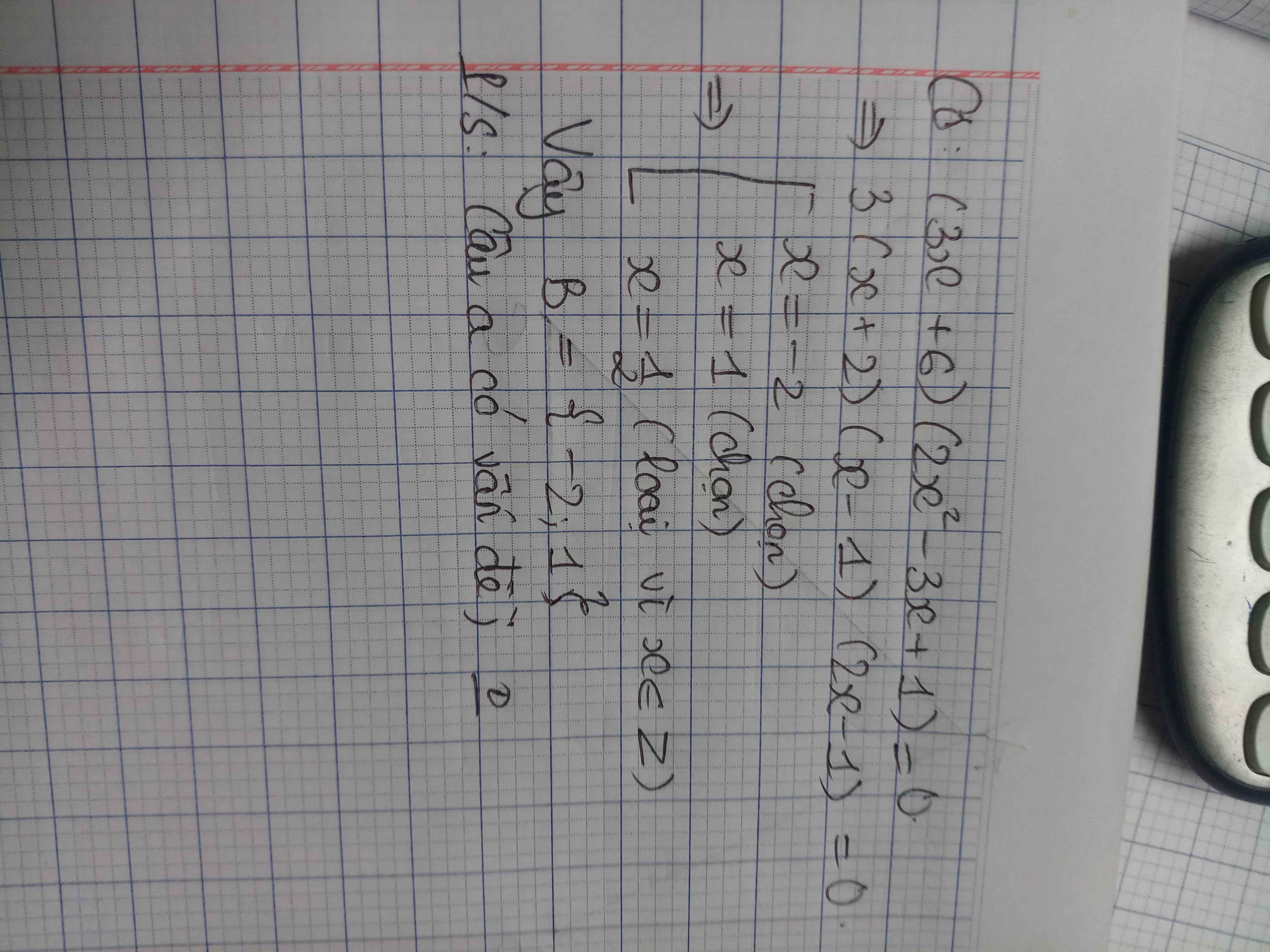
Hãy nhập câu hỏi của bạn vào đây, nếu là tài khoản VIP, bạn sẽ được ưu tiên trả lời.


Lời giải:
$k\in\mathbb{Z}, 0\leq k\leq 4$ nên $k=0,1,2,3,4$
Đến đây, ta thay vô $n=2k+1$ thì $n=1,3,5,7,9$. Những số này chính là phần từ của tập hợp $X$
Vậy ta có thể viết tập $X$ như sau:
$X=\left\{1;3;5;7;9\right\}$
Đáp án C.

a) \(A = \{ 3;2;1;0; - 1; - 2; - 3; -4; ...\} \)
Tập hợp B là tập các nghiệm nguyên của phương trình \(\left( {5x - 3{x^2}} \right)\left( {{x^2} + 2x - 3} \right) = 0\)
Ta có:
\(\begin{array}{l}\left( {5x - 3{x^2}} \right)\left( {{x^2} + 2x - 3} \right) = 0\\ \Leftrightarrow \left[ \begin{array}{l}5x - 3{x^2} = 0\\{x^2} + 2x - 3 = 0\end{array} \right.\\ \Leftrightarrow \left[ \begin{array}{l}\left[ \begin{array}{l}x = 0\\x = \frac{5}{3}\end{array} \right.\\\left[ \begin{array}{l}x = 1\\x = - 3\end{array} \right.\end{array} \right.\end{array}\)
Vì \(\frac{5}{3} \notin \mathbb Z\) nên \(B = \left\{ { - 3;0;1} \right\}\).
b) \(A \cap B = \left\{ {x \in A|x \in B} \right\} = \{ - 3;0;1\} = B\)
\(A \cup B = \) {\(x \in A\) hoặc \(x \in B\)} \( = \{ 3;2;1;0; - 1; - 2; - 3;...\} = A\)
\(A\,{\rm{\backslash }}\,B = \left\{ {x \in A|x \notin B} \right\} = \{ 3;2;1;0; - 1; - 2; - 3;...\} {\rm{\backslash }}\;\{ - 3;0;1\} = \{ 3;2; - 1; - 2; - 4; - 5; - 6;...\} \)

Tập hợp A là tập các số tự nhiên chia hết cho 3 và nhỏ hơn 20.
Vậy A = {0, 3, 6, 9, 12, 15, 18}

a) \(2x^3-3x^2-5x=0\)
\(x\left(x+1\right)\left(2x-5\right)=0\)
\(\Rightarrow\left[{}\begin{matrix}x=0\left(L\right)\\x=-1\left(TM\right)\\x=\dfrac{5}{2}\left(L\right)\end{matrix}\right.\)
\(A=\left\{-1\right\}\)
b) \(x< \left|3\right|\)\(\Leftrightarrow-3< x< 3\)
\(B=\left\{-2;-1;1;2\right\}\)
c) \(C=\left\{-3;3;6;9\right\}\)
a) \(A=\left\{x\in Z|2x^3-3x^2-5x=0\right\}\)
\(2x^3-3x^2-5x=0\)
\(\Leftrightarrow x\left(2x^2-3x-5\right)=0\)
\(\Leftrightarrow x\left(x+1\right)\left(2x-5\right)=0\)
\(\Leftrightarrow\left[{}\begin{matrix}x=0\\x=-1\\x=\dfrac{5}{2}\left(loại\right)\end{matrix}\right.\)
\(\Rightarrow A=\left\{0;-1\right\}\)
b) \(B=\left\{-2;-1;0;1;2\right\}\)
c) \(C=\left\{-3;3;6;9\right\}\)

a) \(A = \{ - 2; - 1;0;1;2\} \)
\(B = \{ - 3; - 2; - 1;0;1;2;3\} \)
b) Mỗi phần tử của tập hợp A đều thuộc tập hợp B.

\(\dfrac{1-2x}{x+2}\in Z\Leftrightarrow\dfrac{-2\left(x+2\right)+5}{x+2}\in Z\Leftrightarrow-2+\dfrac{5}{x+2}\in Z\\ \Leftrightarrow x+2\inƯ\left(5\right)=\left\{-5;-1;1;5\right\}\\ \Leftrightarrow x\in\left\{-7;-3;-1;3\right\}\\ \Leftrightarrow A=\left\{-7;-3;-1;3\right\}\)
A={-1;-3;3;-7}